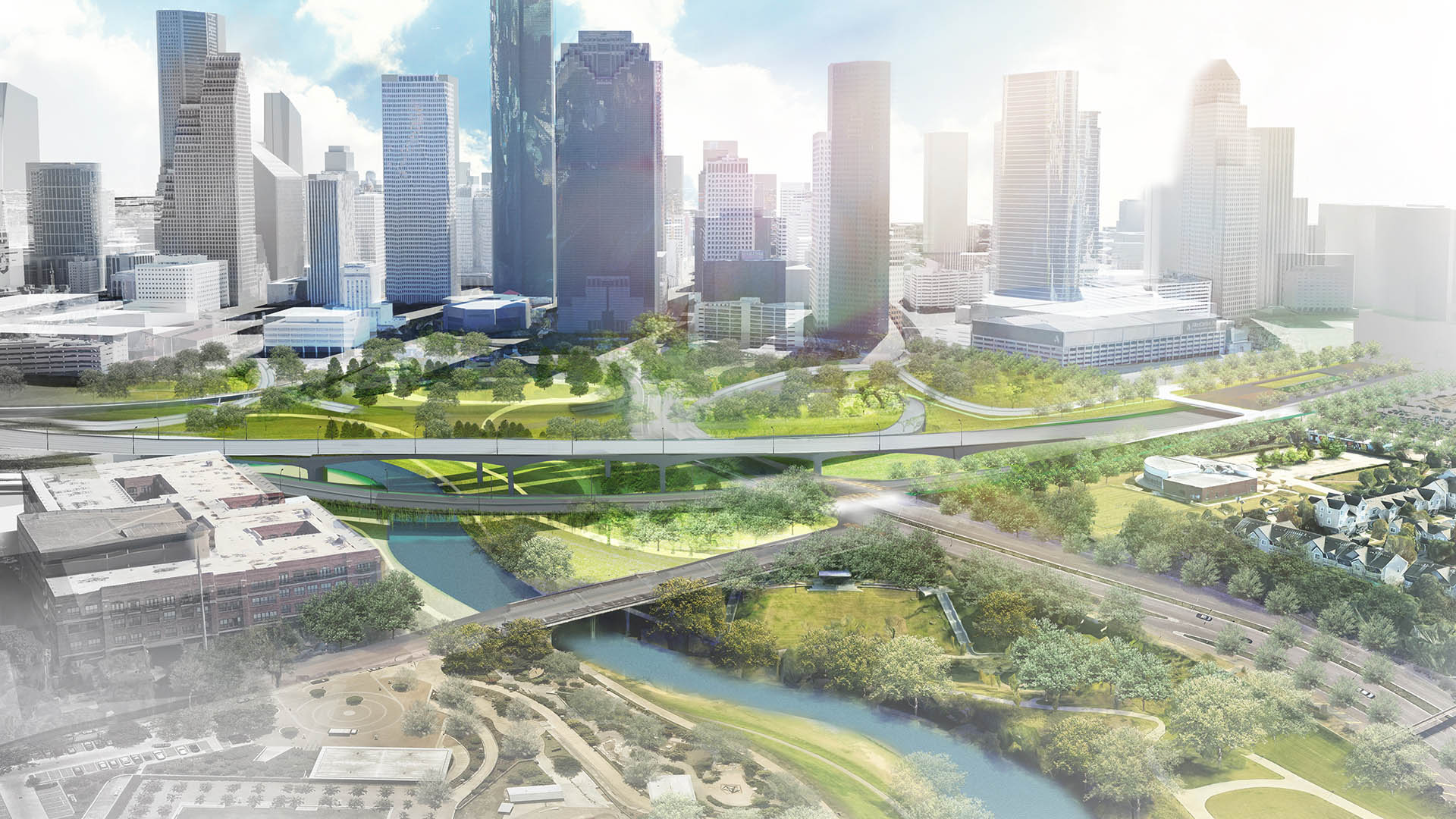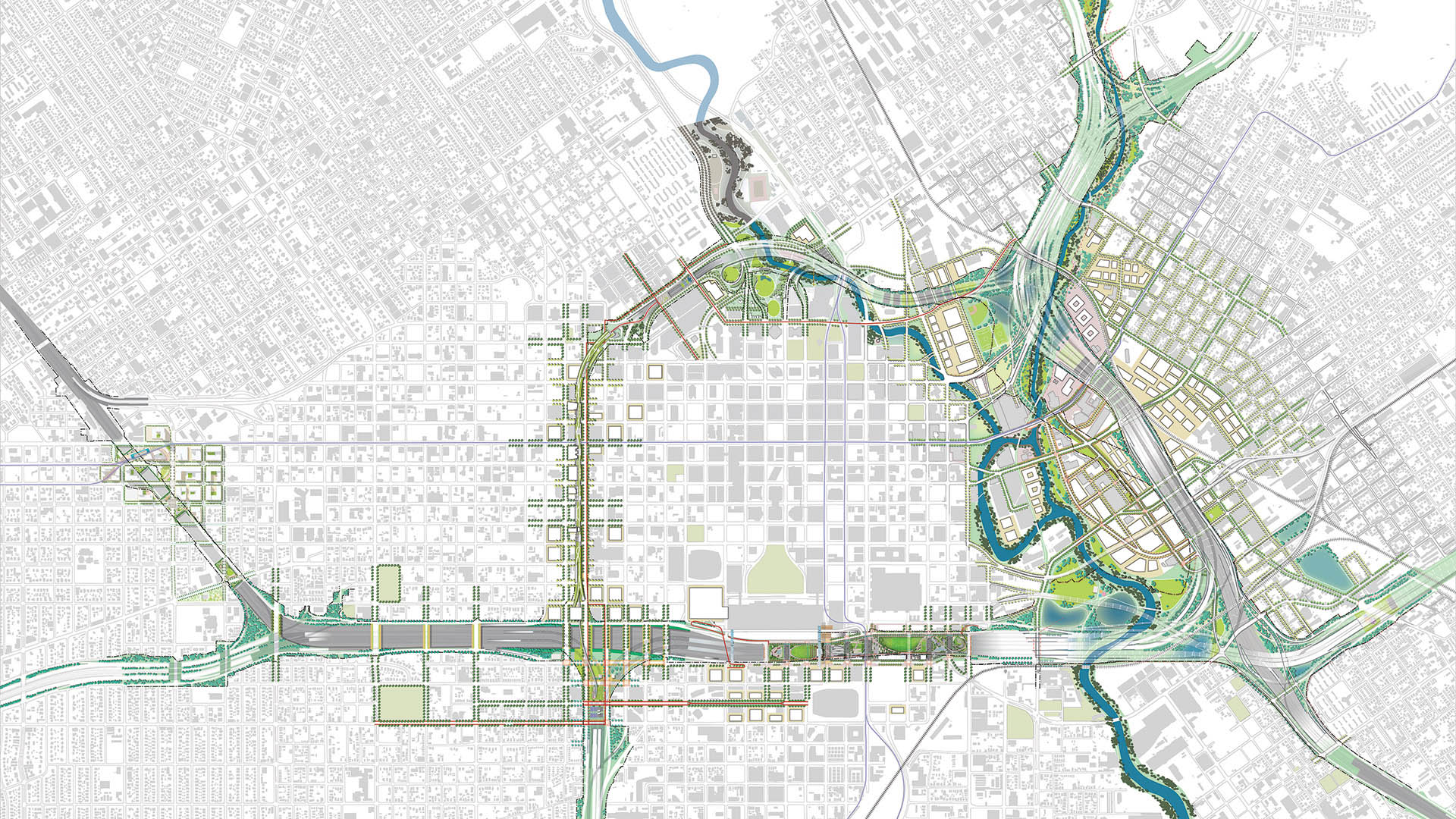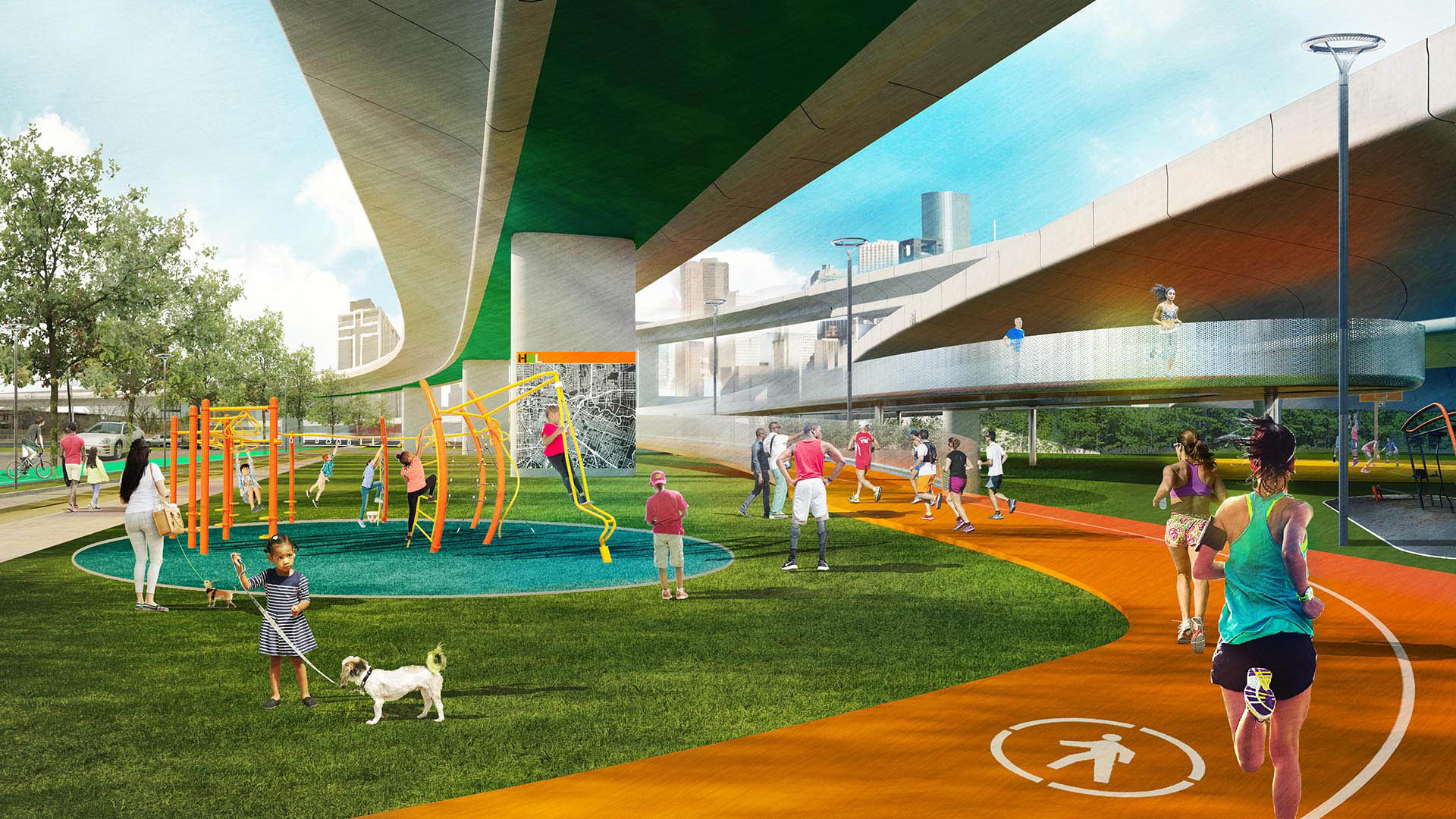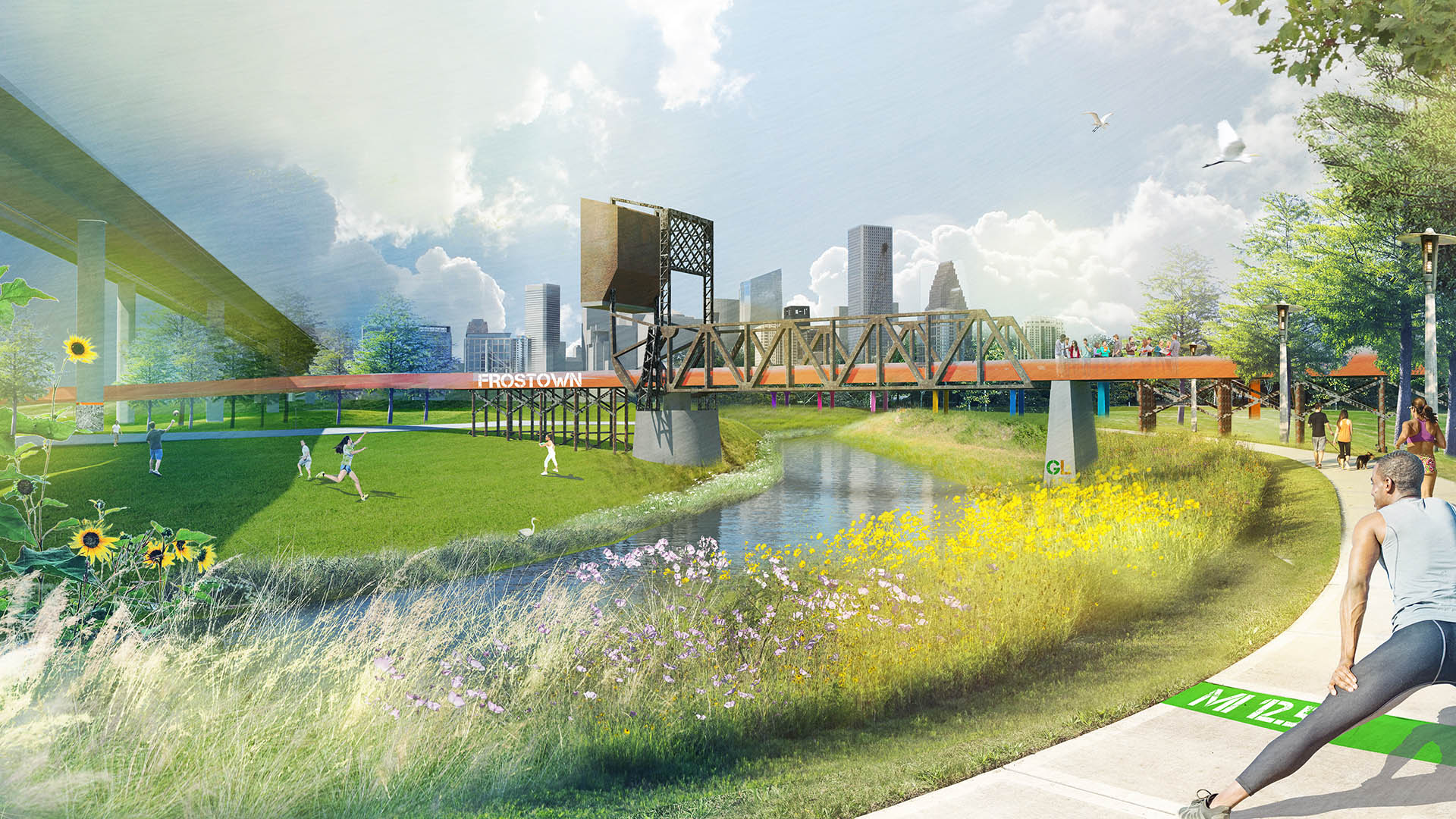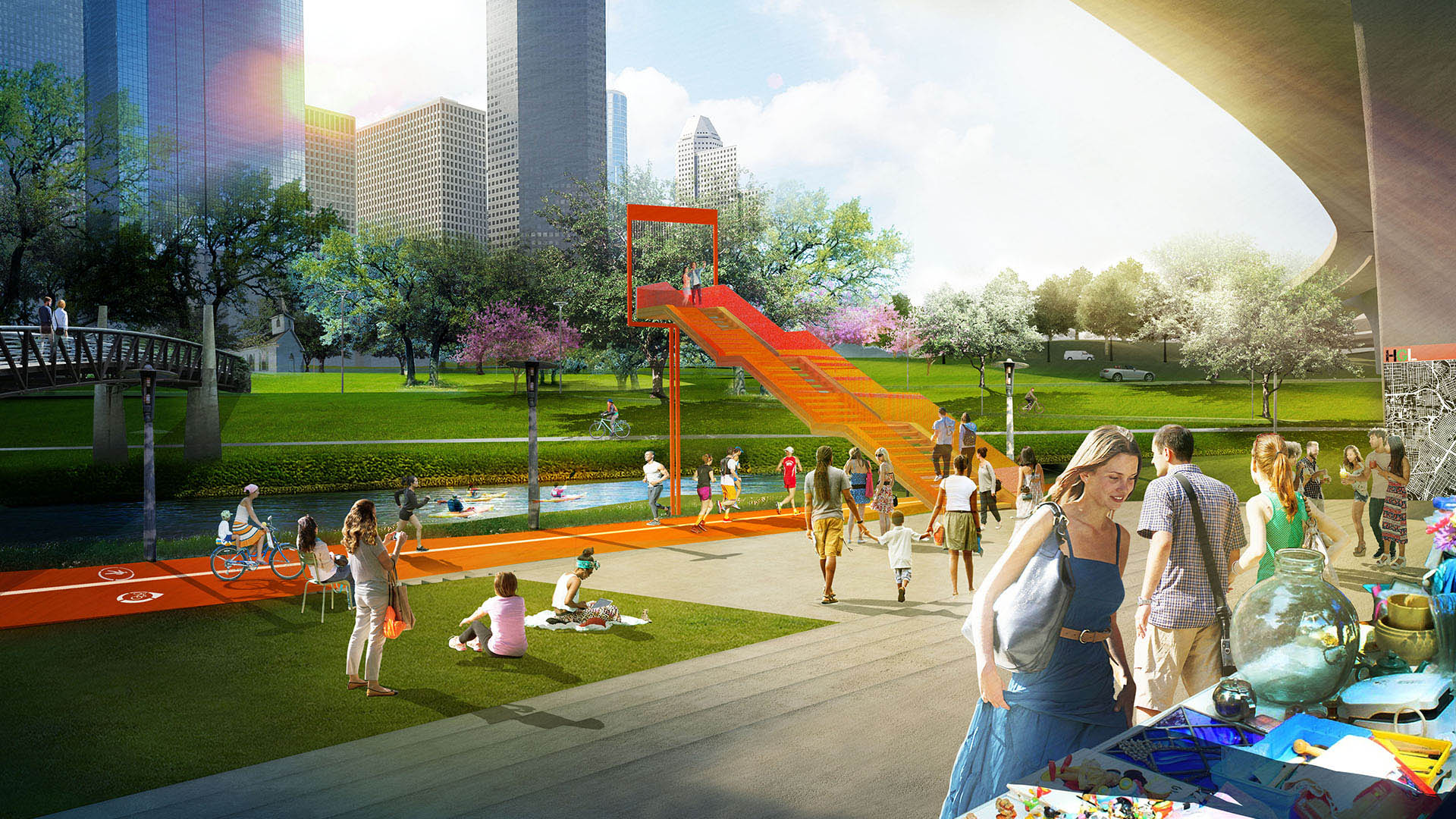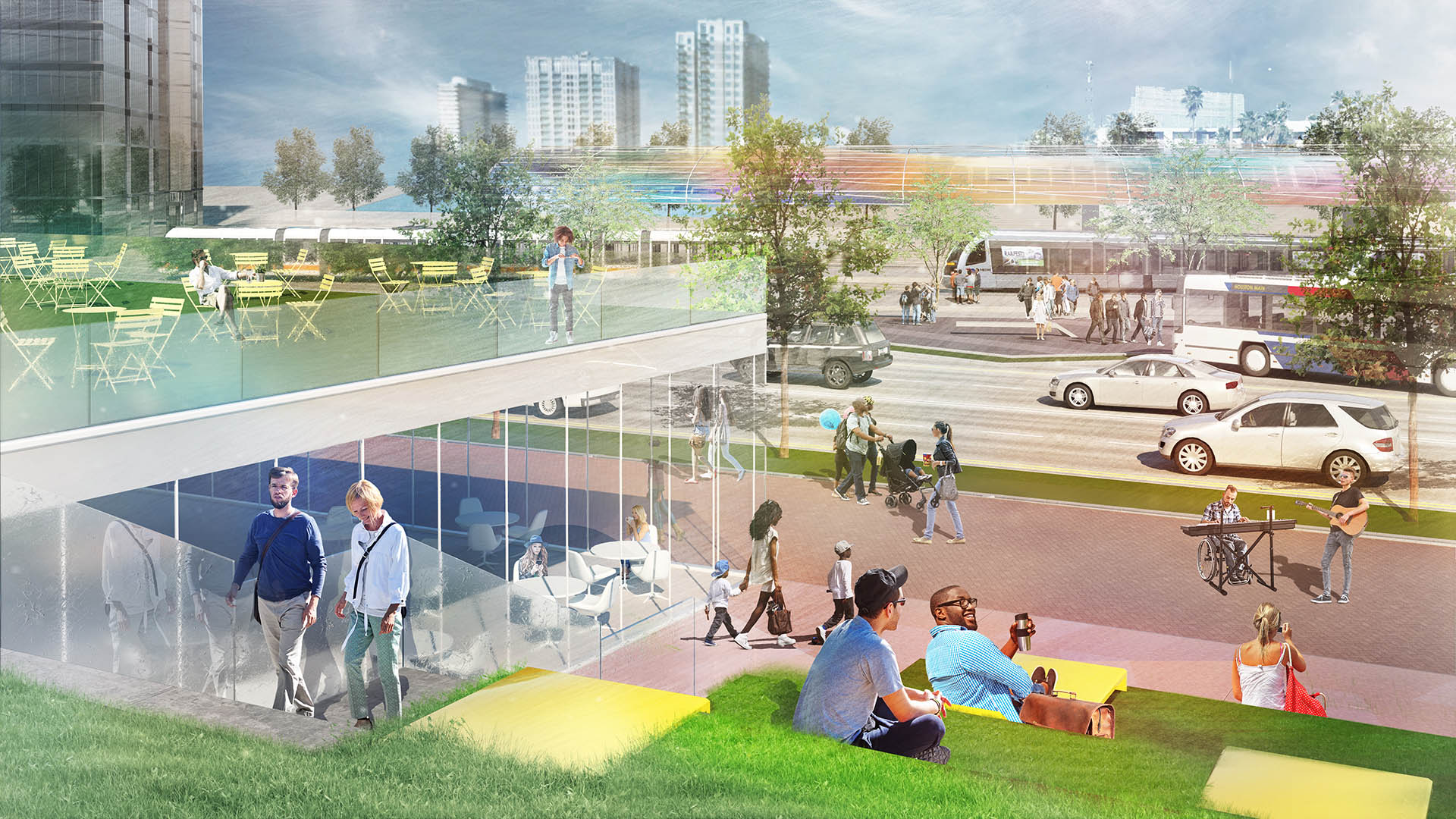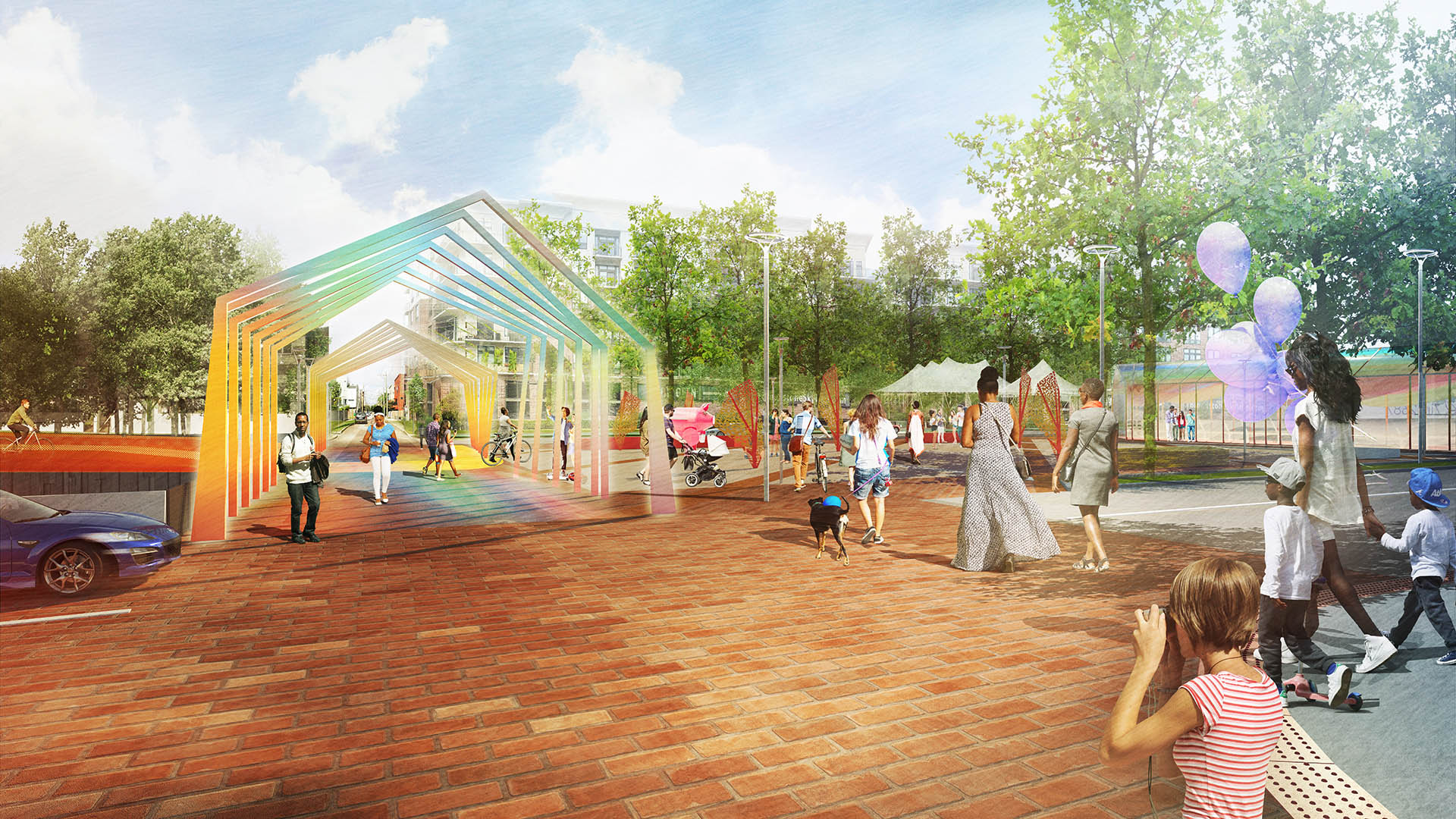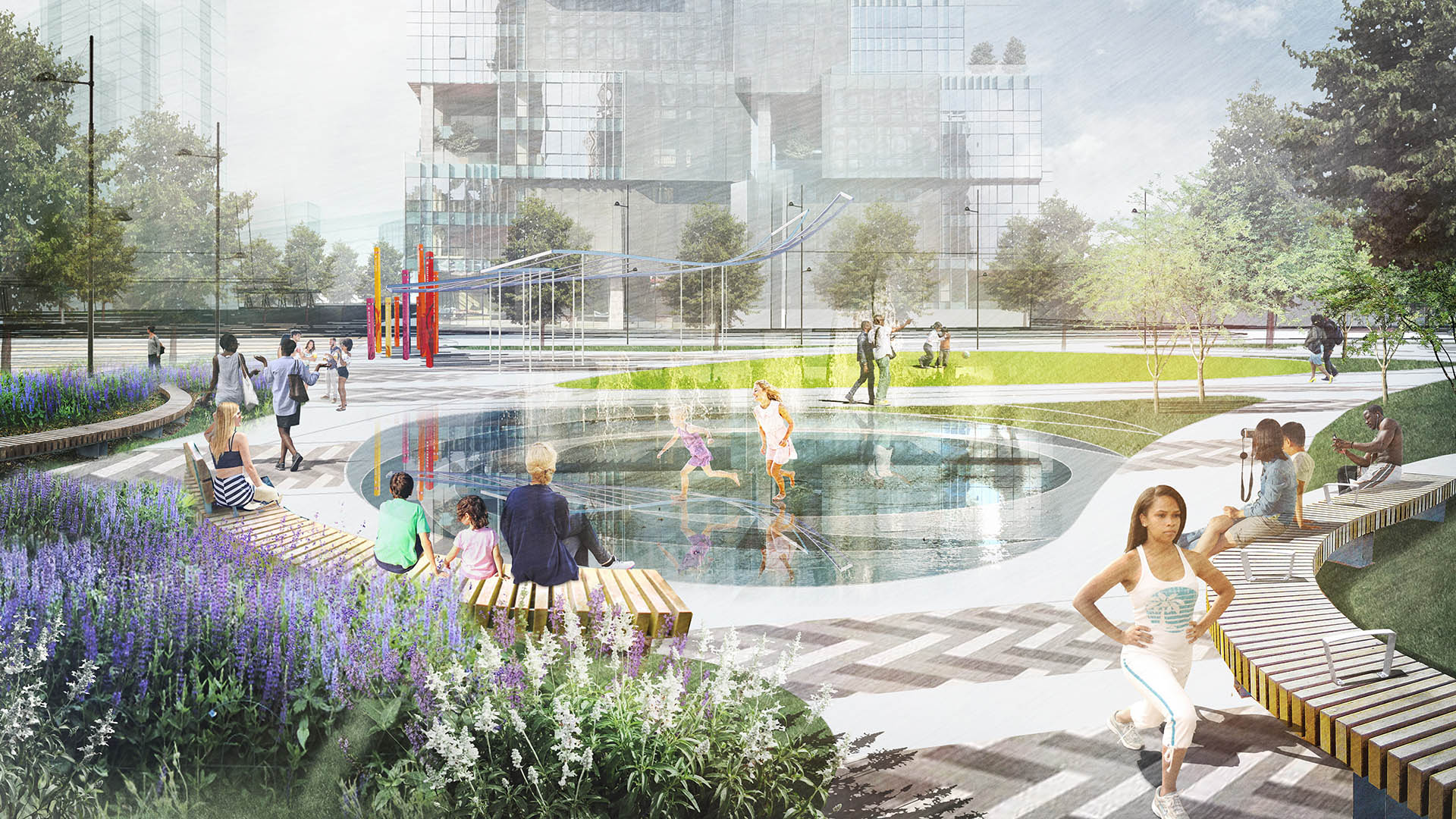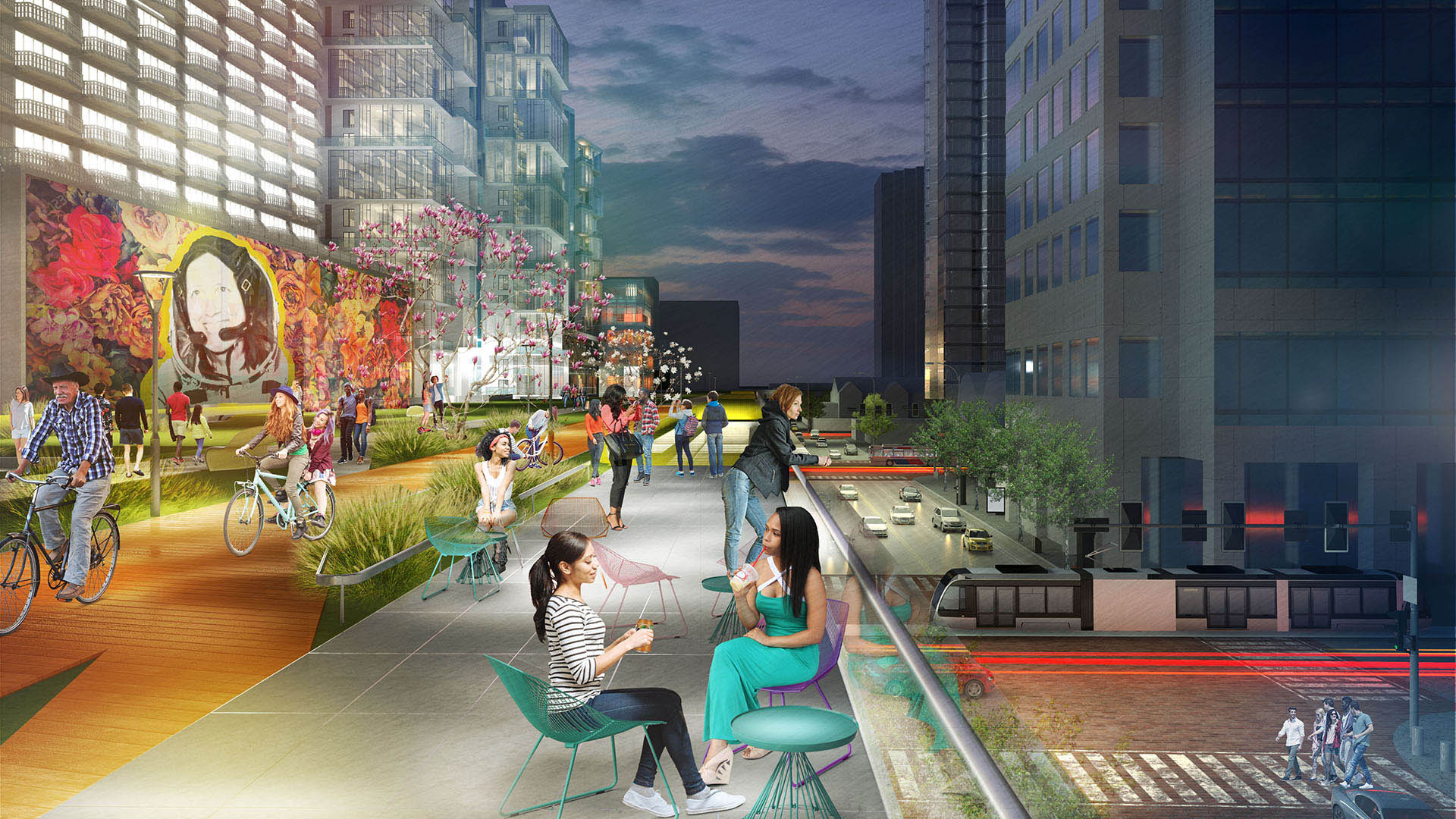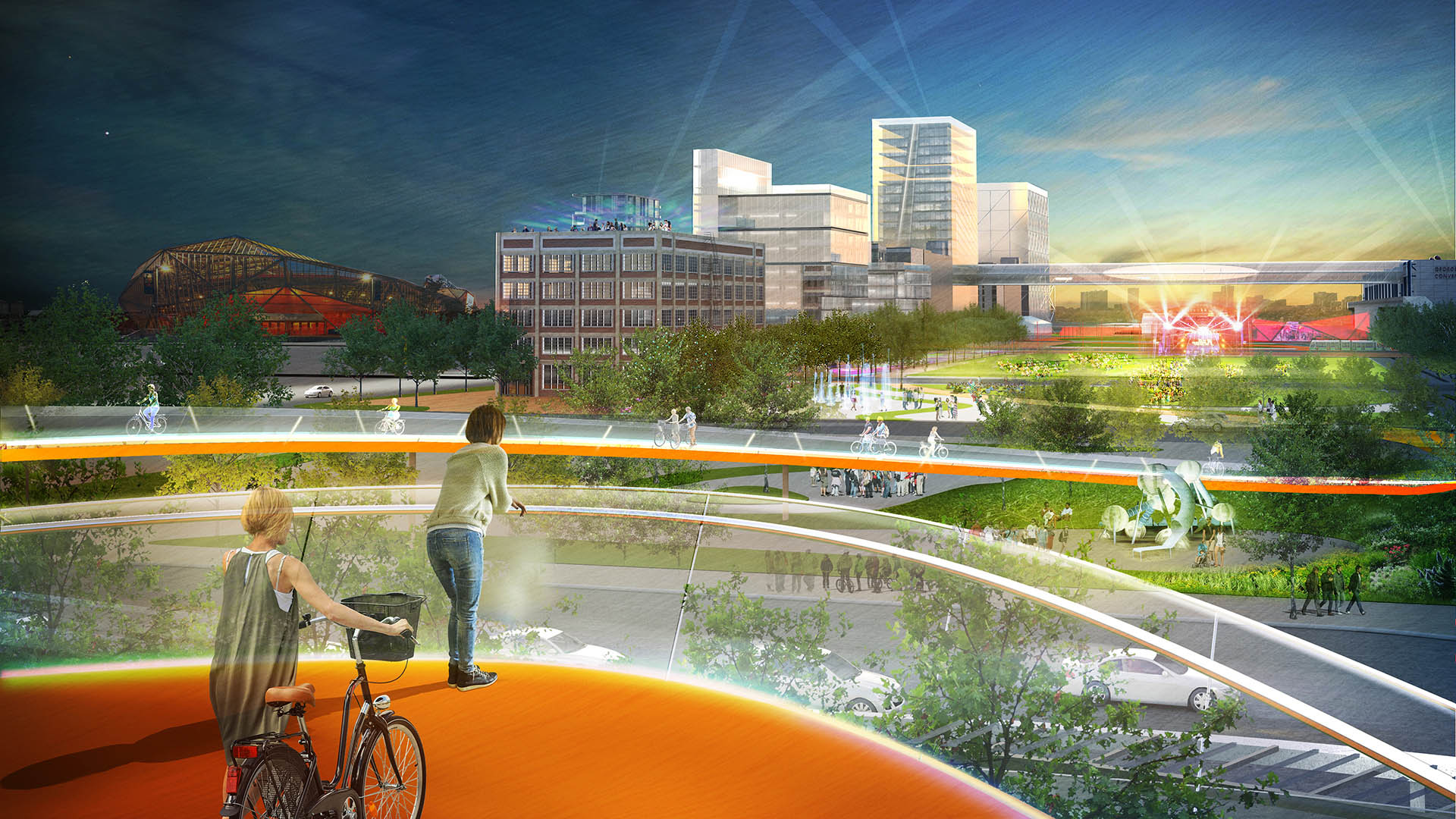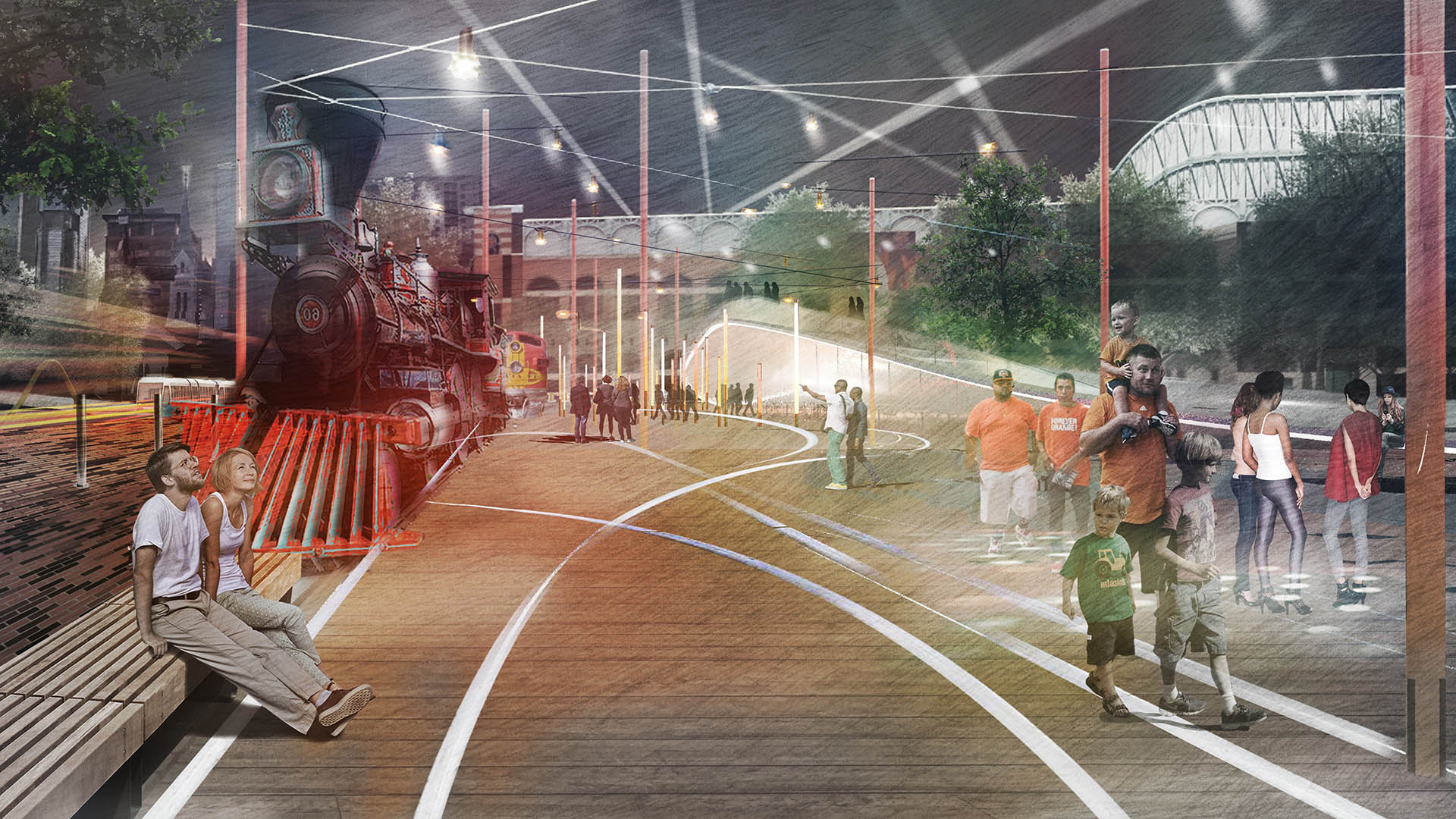As Houston’s Downtown has developed and expanded over many decades, public green space has been increasingly constrained by several interstate routes: primarily I-59, -45, and -69. These thoroughfares, while essential for commuters, have left little room for workers and nearby residents to enjoy unimpeded access to their locale’s adjacent trailways and bayous, and the benefits of a temperate, if flood-prone, climate.
Working in concert with Houston Downtown Management District, traffic engineers at Walter P. Moore, and major stakeholder groups, SWA brought a fresh perspective to TxDOT’s desire to improve the highway system, envisioning new ways to realign existing routes and in some cases, to move them underground – freeing up the city surface for cap parks and additional connections to the firm’s ongoing work on local bayou trail systems. SWA proposed consolidating the pathways of I-45 with I-69, an approach which removes existing elevated infrastructure, partially relocates it underground, and replaces it with an at-grade parkway that reconnects adjacent districts along the roadway and bayous. This parkway feeds directly into the grid of the downtown streets.
Being located square in the middle of North America’s “sun belt,” Houston, TX is ripe for adaptive, climate-friendly, and civic-minded interventions in this vein. The Houston Green Loop, an outcome of the firm’s earlier planning work, builds on these ongoing efforts to establish a Downtown “girdled” not by freeways, but by open space systems – serving both commuters and bordering communities who had been previously cut off from vital local connections and vibrant ecology. Proposed amenities along the Green Loop incorporate unique, pedestrian-scale experiences that offer meaningful exchanges among neighborhoods and urban districts. The vision reimagines the “civic commons” with trails, running paths, restoration of a historic bridge, and detention ponds to further the project’s resiliency goals.
Exemplifying the vision that landscape architects can bring to urban environments, the careful repositioning, demolition, and consolidation of Downtown Houston’s major rights-of-way paves the way to a more resilient future for cities worldwide.
Milton Street Park
Milton Street Park is a 1.2-acre linear urban park alongside the Ballona Creek Bike Trail in Los Angeles, California. The plan incorporates numerous green-design elements, including the use of recycled materials, native planting, flow-through planters and treatment alongside the 1,000-foot-long, 45-foot-wide stretch of land. A variety of special elements such...
Atlanta Museum of Freeway Art (MOFA)
The freeway is an integral part of the open space of the American City, a series of infrastructural systems that affect the spatial characteristics of our natural and cultural landscapes. The Atlanta Connector Transformation Project is a collaborative effort between the City of Atlanta, Georgia Department of Transportation, Downtown and Midtown to improve the ...
Envision Willowick
The Cities of Garden Grove and Santa Ana are developing a “vision” for redevelopment of the Willowick Golf Course site. This process explored conceptual land use options that are formed by community and stakeholder collaboration and input. The Visioning is intended to be used to guide the preparation of development plans for Willowick. The visioning...
Mason Park Bridge
Prior to construction of this Brays Bayou feature, road and rail infrastructure had conspired with the waterway to sever connectivity between parks and surrounding neighborhoods. The Mason Park Pedestrian Bridge, part of a larger effort including trails, seating plazas, lighting, and planting, connects the north and south parts of the City of Houston’s Mason P...


